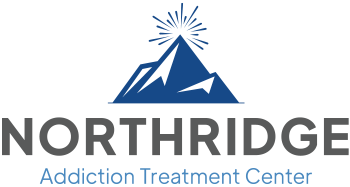Does Percocet Have Codeine in It?

Percocet, the name brand for oxycodone with acetaminophen, acts as a non-steroidal anti-inflammatory drug (NSAID); codeine is a less potent, generic pain killer common in cough and cold medication not found in Percocet.
Understandably, people get confused about the various types of prescription opioids on the market; there are a lot of them. There is also a lot of fear, misinformation, and stigma surrounding opioids and addiction in general.
Chronic pain and prescription drug abuse continue to reach epidemic proportions in the United States. Unfortunately, opioid pain medications are the first things many doctors rely on to treat recurring moderate to severe pain, which leads to overprescribing and addiction. Many who develop opioid use disorders from abusing pain medication turn to heroin and other illicit drugs to sustain their habit and avoid withdrawal symptoms when they can no longer access prescription medicines.
Percocet (oxycodone) and codeine are two of the more frequently prescribed opioid medications for pain management in the United States. Generally, doctors prescribe oxycodone and codeine to manage different health conditions and will seldom instruct a person to use both simultaneously. However, it is still always a good idea to know the difference between opioid-based killers like Percocet and codeine.
Does Oxycodone Have Codeine in it?
Oxycodone does not have codeine in it. Percocet is a combination of oxycodone and acetaminophen that doesn’t contain codeine.
Oxycodone is a semi-synthetic opioid prescription drug to treat moderate to severe pain and is more potent than codeine. Adding codeine to oxycodone, which treats mild to moderate pain management, wouldn’t benefit the medication. And because codeine treats different health conditions and their symptoms, no products with codeine will contain oxycodone.

Oxycodone vs. Codeine
The primary difference between oxycodone and codeine is their chemical formulas and potency, which influence all the other differences.
Below is a list of other contrasts between oxycodone and codeine:
- Origin
Codeine derives from the naturally occurring morphine, and oxycodone is lab-created and contains acetaminophen.
- Potency
Oxycodone binds to the opioid receptors stronger and for more extended periods than codeine, making it a more potent painkiller.
- Purpose
Codeine helps with mild to moderate pain and is usually mixed with other ingredients to act as a cough suppressant in patients experiencing discomfort. Due to its potency, oxycodone treats moderate to severe pain in patients with injuries, chronic illness, or terminal diseases.
- Cost
Lower potency and effectiveness means codeine is easier to access and more affordable to produce and distribute. However, despite costing more, oxycodone is more widely abused.
- Length of Effectiveness
Codeine only comes in short-acting formulas that last four to six hours. Oxycodone has short and long-acting formulas that last from three to twelve hours.
- Schedule Classification
In any dose, oxycodone is a Schedule II controlled substance. Depending on the amount of codeine, it is a Schedule II, III, or V controlled substance.
- Potential for Abuse
A drug’s scheduling on the list of controlled substances indicates the potential for abuse and addiction. Oxycodone has a high potential for abuse, while codeine has low abuse potential but is often considered a gateway opioid by health experts.
- Methods of Abuse
People abusing oxycodone will swallow, snort, or inject it. Codeine abuse usually involves mixing it with alcohol and soft drinks to make a concoction called “purple drank” or lean.
Side Effects
Because Percocet and codeine are both opioid drugs, they have similar side effects. The severity and length of the side effects from either medication will vary based on the dose, the person taking it, and any drug interactions that happen.
Common side effects of oxycodone or codeine include:
- Digestive problems like nausea, vomiting, and constipation
- Dizziness
- Drowsiness
- Sedation
- Pain relief
- Changes in blood pressure and heart rate
- Respiratory depression
- Loss of coordination
- Nodding off or inability to stay awake
- Slurred speech
- Memory difficulties
- Dry mouth
- Feelings of euphoria
- Sweating
- Itching and flushed skin
- Abdominal pain
- Anxiety
- Tolerance
- Physical dependence
Long-term use of prescription opioids is likely to lead to opioid addiction. Because Percocet is a non-steroidal anti-inflammatory drug (NSAID) containing acetaminophen, Percocet addiction carries the additional risk of liver failure.

Similarities Between Oxycodone and Codeine
Besides sharing some common side effects and being opioid pain relievers, there are other similarities between oxycodone and codeine.
Oxycodone and codeine are alike in the following ways:
- Method of Action
Oxycodone and codeine both bind to opioid receptors to block and alter pain signals.
- Chemical Reactions in the Brain
Both drugs interact with the brain to release dopamine and serotonin to cause relaxation and feelings of euphoria.
- Length of Use
Ideally, codeine and oxycodone are short-term treatment options for pain management. Neither should be used long-term or as a substitute for healing and non-addictive treatment options.
- Drug Interactions
Oxycodone and codeine interact with other drugs, especially central nervous system depressants like alcohol, Xanax, and benzodiazepines.
- The Body’s Adaptation
Both codeine and oxycodone cause physical dependence after consistent use.
- Addiction Potential
Because of all the previously mentioned similarities, addiction is possible with prolonged use of either medication.
- Overdose Risk
High doses of oxycodone or codeine can cause an overdose, and both can cause fatal drug interactions.
- Withdrawal
People dependent on or addicted to either oxycodone or codeine will experience withdrawal symptoms if they abruptly stop taking them.
Of course, the most troubling similarity between all opioid drugs is the potential for addiction, overdose, and withdrawal. Quitting oxycodone or codeine after long-term abuse can be dangerous and lead to unpleasant and sometimes life-threatening withdrawal.
People abusing prescription drugs to treat pain may believe the addiction is better than the pain or going through withdrawal symptoms. Seeking professional treatment for opioid misuse can help people overcome withdrawal safely and explore healthier pain management techniques, including non-addictive medications.
Treatment for Percocet and Codeine Addiction
If you or a loved one are struggling with an addiction to opioids, including Percocet or codeine, help to start a life free from substance abuse is available.
At Northridge Addiction Treatment Center, we understand that once the cycle of addiction begins, it can be almost impossible to stop on your own. Our residential treatment center provides a calming, supportive, and family-like environment where you can learn to manage your opioid use disorder and co-occurring disorders.
We offer onsite medical detox with 24-hour medical care to ease dangerous withdrawal symptoms and monitor your health. Once you regain your strength and clarity, we will work closely with you to collaborate on an individualized treatment plan to address all your needs and recovery goals.
Individual therapy, cognitive behavioral therapy, and guided 12-step facilitation therapy support groups help you build the confidence, knowledge, self-care habits, and coping skills to help you live a happy, healthy, and meaningful life in recovery.
The path to recovery is waiting for you. Contact us to speak with a caring treatment expert to get the help you deserve.
Find Meaningful Recovery
Our caring and compassionate specialists are eager to help you comfortably navigate this journey to recovery. Our individualized treatment plan, programs, and therapies may be a perfect match for you or your loved one. Let us assist you in living the happy life you deserve. It starts with a phone call.




